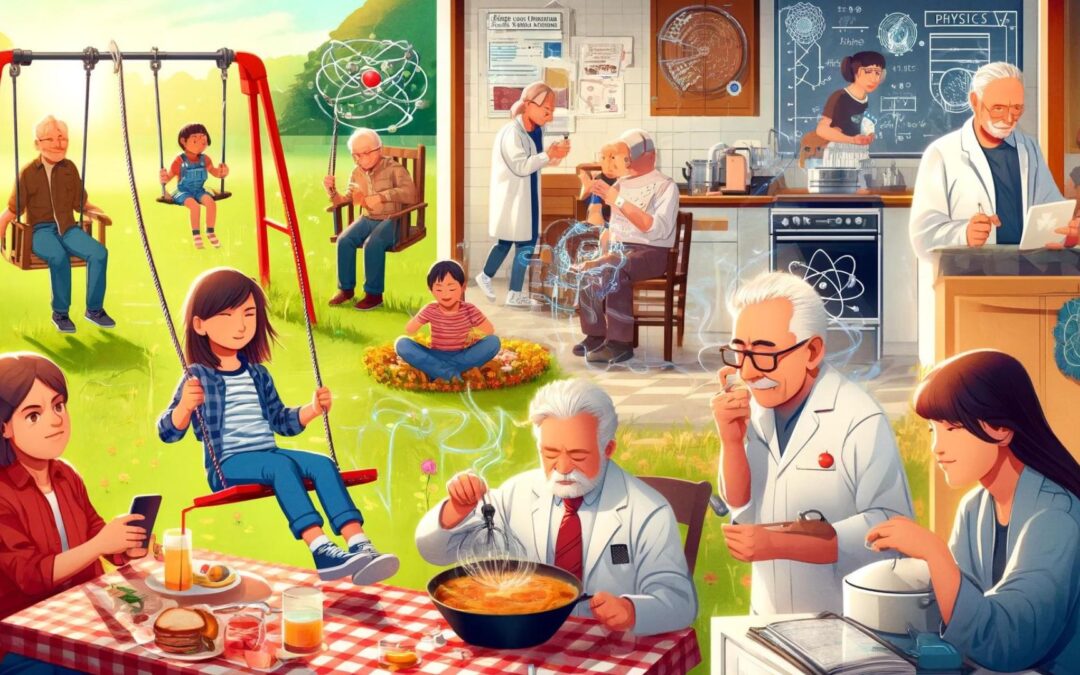- The Digital Shift: More Than Just Gadgets
- Enhanced Accessibility and Personalized Learning
- Preparing for a Digital Future
- Collaboration Beyond Walls
- Challenges and Balance
- Real-Life Examples: Technology in Action
- Conclusion: Embrace the Change
- Why Should You Care?
- Key Takeaways
- Keywords and Definitions
- Frequently Asked Questions
- Myth Buster
- Let’s Talk: Discussion Questions
experiencing, interacting, and engaging with the subject matter in a dynamic way. This is the reality of modern classrooms transformed by technology. The integration of digital tools and innovative educational approaches is reshaping the way teachers teach and students learn.
The Digital Shift: More Than Just Gadgets
Technology in education goes beyond the use of laptops and projectors. It’s an ecosystem of interactive software, virtual reality (VR), augmented reality (AR), and cloud-based platforms that bring a new dimension to education. For instance, AR can turn a biology lesson into an interactive 3D experience, allowing students to explore the human body in ways that were once impossible.
Enhanced Accessibility and Personalized Learning
One of the most significant benefits of technology is its ability to cater to diverse learning needs. Educational apps and platforms offer personalized learning experiences, adapting to each student’s pace and style. For example, a student struggling with mathematics can find a multitude of adaptive learning apps that offer practice exercises and tutorials tailored to their individual needs.
Preparing for a Digital Future
Incorporating technology in the classroom doesn’t just make learning more engaging; it also prepares students for a future dominated by technology. Skills like coding, digital literacy, and data analysis are becoming fundamental, and schools are the perfect breeding grounds for these skills. A student who learns to code in school is not just learning a subject but acquiring a skill set essential for numerous future career paths.
Collaboration Beyond Walls
Technology has also broken down the physical barriers of the classroom. Through tools like video conferencing and online collaboration platforms, students can engage in global exchange programs, interact with experts from various fields, and work on projects with peers from around the world. This global connectivity fosters cultural awareness and prepares students for an increasingly interconnected world.
Challenges and Balance
While the advantages are numerous, the challenges cannot be ignored. Issues like screen time, digital divide, and ensuring online safety are crucial. It’s important for educators and parents to strike a balance between leveraging technology and maintaining healthy digital habits.
Real-Life Examples: Technology in Action
- Virtual Field Trips: Schools are using VR to take students on virtual field trips to museums, historical sites, and even outer space, offering immersive learning experiences without leaving the classroom.
- Interactive Whiteboards: These have replaced traditional blackboards, making lessons more interactive and allowing teachers to incorporate multimedia resources into their teaching.
- Online Assessments: Teachers are utilizing online platforms for assessments, providing instant feedback and insights into student performance, helping to identify areas that need additional focus.
Conclusion: Embrace the Change
The integration of technology in education is not just a trend; it’s a necessary evolution to keep pace with a changing world. As educators, students, or stakeholders in education, embracing this change is imperative. Explore the possibilities that technology offers in education. Advocate for and support the integration of these tools in your local schools. Remember, the goal is not to replace traditional teaching methods but to enhance them, to make learning more relevant, engaging, and effective for the digital age.
Take the first step – explore an educational technology tool today, and witness its impact on your learning or teaching experience. The future of education is in our hands, and it’s brimming with possibilities!
Why Should You Care?
Learning about the impact of technology in modern classrooms is crucial for several reasons. First, it helps understand how education is evolving and prepares you for current and future educational environments. Second, it highlights the skills necessary to thrive in a tech-centric world. Lastly, for parents, educators, and students, understanding this shift can help in adapting to and leveraging these changes for better educational outcomes.
Key Takeaways
- Technology Transforms Learning: Modern classrooms are increasingly incorporating technology, changing the traditional methods of teaching and learning.
- Personalized Education: Technology enables customized learning experiences to cater to individual student needs and learning styles.
- Preparation for a Digital Future: Technology in education prepares students with essential skills for a future dominated by digital technologies.
- Global Connectivity: Technology enables collaboration and communication beyond geographical barriers, promoting global awareness.
- Balancing Act: While technology offers numerous benefits, it’s crucial to balance its use with healthy digital habits and address challenges like the digital divide.
Keywords and Definitions
- Virtual Reality (VR): A simulated experience that can be similar to or completely different from the real world. In education, VR can provide immersive learning experiences.
- Augmented Reality (AR): An enhanced version of reality created by the use of technology to overlay digital information on an image of something being viewed through a device. AR in education can make learning more interactive and engaging.
- Adaptive Learning Apps: Software applications that adapt content and pacing to the learner’s ability, providing a personalized learning experience.
- Digital Literacy: The ability to find, evaluate, utilize, share, and create content using information technologies and the Internet.
- Coding: The process of designing and building an executable computer program to accomplish a specific computing result or to perform a particular task.
- Online Collaboration Platforms: Web-based platforms that allow multiple users to work together on shared projects or documents, regardless of their physical location.
- Screen Time: The amount of time spent using a device with a screen such as a smartphone, computer, or television.
- Digital Divide: The gap between demographics and regions that have access to modern information and communications technology, and those that don’t or have restricted access.
- Interactive Whiteboards: A large interactive display that connects to a computer and projector, allowing users to interact with digital content.
- Online Assessments: Evaluations conducted over the Internet to measure the knowledge, skills, abilities, or personality traits of an individual.
Frequently Asked Questions
How can technology in classrooms help students with disabilities?
Technology can provide assistive tools for students with disabilities, such as text-to-speech for visually impaired students or speech recognition for students with physical disabilities. These technologies make education more accessible and inclusive.
Are there risks of technology reducing the role of teachers in the classroom?
While technology is a tool to aid education, it does not replace the essential role of teachers. Instead, it serves as an extension to enhance the teaching process, offering teachers more resources to effectively convey information and engage students.
Myth Buster
Myth: Technology in the classroom is just a distraction.
Reality: When used appropriately, technology enhances learning experiences, engages students more deeply, and prepares them for a digital future. The key is in how it’s integrated and managed within the educational setting.
Let’s Talk: Discussion Questions
- How has technology impacted your personal learning experiences?
- What are the potential drawbacks of integrating technology in education, and how can they be mitigated?
- How can technology be made more accessible in less privileged educational settings?
Feel free to share your thoughts and experiences in the comment section. Your insights are valuable in understanding the diverse impacts and perspectives on technology in education!












0 Comments